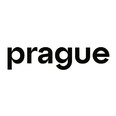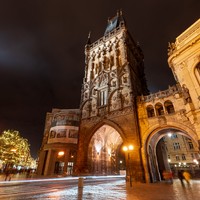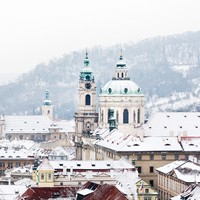Breadcrumbs navigation
Prague Towers and their tales
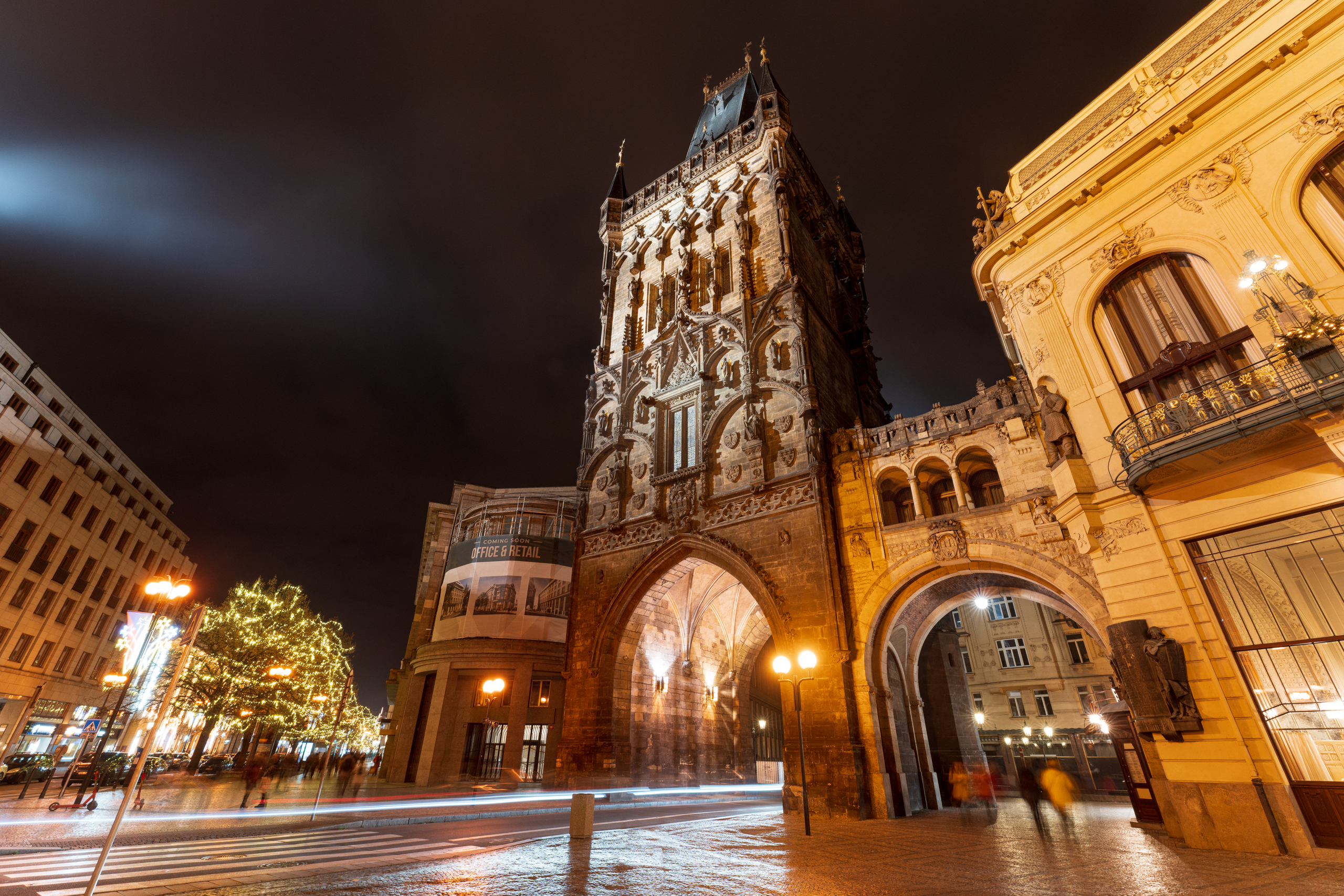
Each of the Prague towers that we manage has its own symbol. Sometimes they have an obvious basis, but others have revealing tales to tell. We bring you seven stories of our seven towers: they speak of greatness, loyalty, love, struggle, mystery, tradition and art. Come with us on a journey of discovery about Prague’s tower symbols.
Published on December 17, 2021

Old Town Hall – the Sun
A tale of Greatness
There are many stories associated with the Old Town Hall. The symbol of the sun relates to the Old Town Astronomical Clock. We find the sun on its main hour hand, which carries it across the clockface or astrolabe. At the same time the sun also moves up and down, to mark how it appears in the sky during the year, since this is an astronomical clock and the astrolabe is its major element.
The sun is a symbol of greatness: It was personified by the ancient Egyptian god Ra and the Greek god Helios. The greatness of the astronomical clock is also that of Master Hanuš; as told by Alois Jirásek, narrator of Old Czech Legends, the supposed maker of the Old Town Astronomical Clock. Never mind that the historical record show a different original maker, Master Hanuš is acknowledged as having made significant improvements. He will forever live in the legends of Prague as the man the councillors ‘repaid’ for his extraordinary work by blinding him. They were to have done so for fear that this brilliant clockmaker might build another, equally breathtaking mechanism elsewhere.
The magnificence of his work thus plunged its creator into eternal darkness, never to see the sun rise again. Nevertheless, the astronomical clock and Master Hanuš will remain symbols of greatness.
Old Town Bridge Tower – a Kingfisher
A tale of Loyalty
Looking carefully at the Old Town Bridge Tower, you’ll spot a kingfisher in a ‘torse’ (“věník” in Czech), a heraldic twisted cloth, in this case a bathhouse towel. It is the personal emblem of King Wenceslas IV, and combines two legends.
The first is an ancient myth about Halcyone, the daughter of Aolus, king of the winds. When she found out that her husband – king Ceyx, a passionate navigator – had been shipwrecked and the sea was carrying his body onto the rocky shore, she threw herself into the waves, too, full of grief. However, the gods were moved by her love and turned her into a kingfisher, as well as saving the king, whom they gave new life. The kingfisher thus became a symbol of love and loyalty. The torse recalls the story of the imprisonment of King Wenceslas IV by the Prague nobility. After he was given dispensation to visit the baths to clean himself up, the beautiful coiffeuse and bathhouse wench Zuzana helped him to escape. The king did not forget her loyalty, and rewarded her generously.
Both accounts are legends, but that doesn’t mean they’re meaningless. The truth of a story can be its true message, not just whether it truly happened. And loyalty is a virtue that has endured down the ages, just like the Old Town Bridge Tower.
Petřín – Cherry blossom
A tale of Love
The story that springtime blossoming Petřín recounts to us every year is the story of love. Karel Hynek Mácha, the Czech ‘patron of lovers’, whose statue has been watching hand-holding couples for more than a century near the Nebozízek villa on Petřín’s slopes, tells of love in his acclaimed poem ‘May’.
This iconic poem tells of a robber, Vilém, his girl, Jarmila, and her seducer – Vilém’s father. Nevertheless, the statue on Petřín tells of another love, that of Mácha and Lori Šomková. Mácha’s encrypted diary tells us that Karel Hynek was no exemplary ‘fiancé of the year’ and his behaviour towards Lori would not pass muster these days. Yet he loved her, in his own exalted way. After she bore him a son, he decided to marry her. The wedding date was set for 8 November 1836. Unfortunately, while firefighting in Litoměřice on 23 October Mácha either caught a bad chill or drank contaminated water; he died 14 days later. He was buried in Litoměřice on what should have been their wedding day.
Petřín, of which Mácha is the unwritten patron, is suffused with cherry blossoms every spring. The cherry trees blossom here year after year, again and again, just like love itself.
New Mill Water Tower – a Millwheel
A tale of Struggle
The story of the New Mill Water Tower is the story of fire and of water, its eternal nemesis. Today’s stone tower stands where the original wooden water tower used to stand from the end of the 15th century, built to supply the New Town fountains, breweries and several houses with water, as powered by a millwheel.
The tower symbolized the eternal struggle between fire and water. To keep the water flowing in the pipes in the winter, an open fire was kept in the tower for heat. But sometimes the good servant tuned into a bad master and the construction burnt down to the ground. The tower thus kept being alternately rebuilt and ravaged by flames until 1606, when the builders finally upgraded and opted for stonemasonry. Ironically, however, the stone tower was overcome by water 50 years later – during the record flood of 1655, and most of it came down. The building as we know it today, standing on Prague’s embankment, was built out of the ruins in 1658.
As already mentioned, water from this tower filled 56 fountains in the New Town, which also served as a source of water for extinguishing minor fires in nearby houses. The struggle against fire is its key feature to this day. The Tower has undergone complete renovation, and now houses an exhibition about Prague’s firefighters, and fires. We too have our own fires and wild surges raging within us sometimes. The story of the New Mill Water Tower is in some respects the story of us all.
Lesser Town Bridge Tower – a Maltese Cross
A tale of Mystery
The symbol of the Lesser Town Bridge Tower (called Judith’s Tower) is the 8-pointed cross of the Order of the Knights of Malta. Their first Commandery in the Czech Lands was established at the end of the 12th century on the left bank of the Vltava River, and the originally Romanesque Judith Tower was part of the fortifications that protected the Maltese (then Johannite) monastery.
The mission of the Order, whose original name was the Hospital Brethren of St John the Baptist of Jerusalem, was to care for sick pilgrims in the Holy Land and to protect them. The order’s charitable focus continues to this day.
Furthermore, the Lesser Town Johannite Commandery keeps one very compelling secret, with respect to the Czech Lands. There is an as-yet unfalsified historical research finding that one of their knights was the mysterious Dalimil – the mysterious author of the first Czech versified Chronicles. We may never known whether this landmark work of Czech medieval historiography was actually written in the shadow of the Lesser Town Bridge Tower. But the magnificence of its mysterious past can still be felt and admired by everyone today.
The Powder Gate Tower – a Crown
A tale of Tradition
The symbol of the Powder Gate Tower is the royal crown, because it was the starting point of the so-called Royal Route. This led up to the Castle, where the rulers were crowned Czech Kings. Over the course of 398 years, 19 rulers took the route toward their Czech coronation.
The most famous Czech ruler, Charles IV, the ‘Father of the Homeland’, was not among them – the tradition of these coronation processions started some 60 years after his death. The story of the Powder Tower is nevertheless his story, for that symbolic crown is the one that he had made. It is no ordinary symbol of power – being, together with the other crown jewels, the most prized symbol of the Czech state and the Czech nation.
Charles IV had it made not as a personal adornment, but as the sacred crown of the Czech nation, dedicated to its patron saint, Wenceslas. Every Czech king thus symbolically takes care of the country under his guidance. It does not belong to him – it belongs to St Wenceslas, the eternal Heir to the Czech lands. It is to him that the reigning king is accountable. This is in keeping with the onus the Czechs place on their rulers even now, undiminished by the ending of monarchy. We still expect the head of the country to be found fitting by St Wenceslas; to be fit to bear his crown.
St Nicholas Bell Tower – a Bell
A tale of Art
Four bells used to hang in the St Nicholas Bell Tower. Three were requisitioned and converted into cannons and ammunition during World Wars I and II. Only the bell of St Nicholas remains, a prized memento of our late Gothic heritage. The story of the St Nicholas Bell Tower is the story of its creator Brickí z Cimperka.
Prague bellmaker and foundryman Brikcí of Cimperk is arguably the greatest Czech bellmaker of all time. He gained his mastery of the craft from his father Ondřej Pražský, also a renowned bellmaker. He gained further experience in Germany and Poland. When he cast his first bell, he was barely 20 years old. His bells are unique. They have their own particular profile, are lightweight and perfectly melodic. During his lifetime he cast more than eighty of them. He became a leading personage of Prague in his time, sat in the Provincial Assembly, owned an extensive collection of books and paintings. The symbol of the St Nicholas Town Bell Tower tells of a craft that has grown into an art.
The genius Brikcí had seven children. We know that one of them was also a bellmaker and another a foundryman. We also know the fate of his daughter Anna: She married the councillor of the New Town of Prague, Ondřej Kocour of Votín, who knew and admired his father-in-law’s work. When, on 21 June 1621 he joined the other 26 leaders of the Estates Uprising on the Old Town Square execution ground, he most likely recognized some of the bells ringing out all over the city.
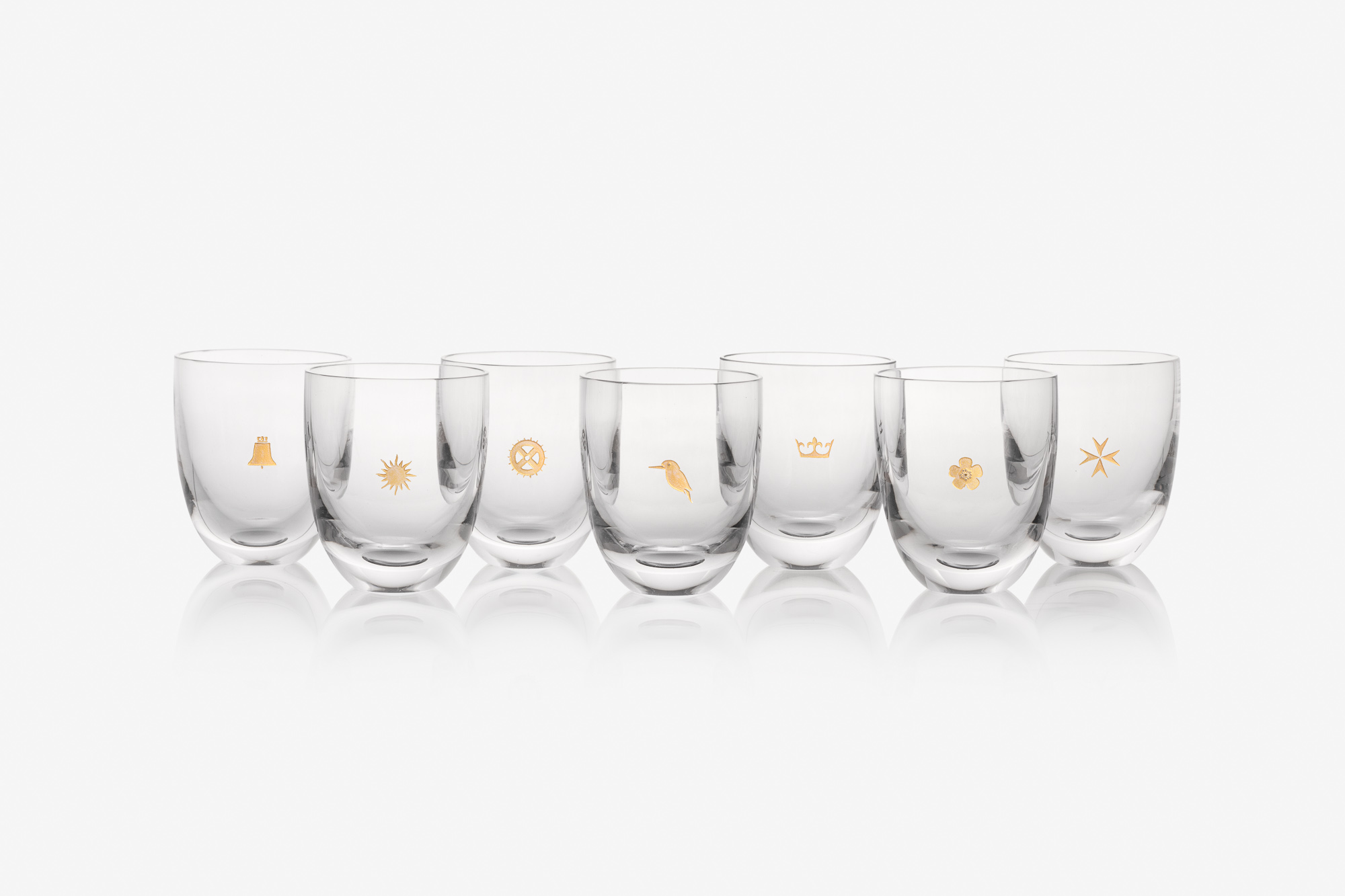
Symbols of Prague Towers on classy souvenirs
As a keepsake to remind of the ‘towering tales’ of our seven towers, we have some high-class souvenirs – Rückl designer goblets and cups from Studio Malíská – adorned with the tower symbols; in gold on the crystal glasses, in cobalt blue on the cups. Cast your mind back to happy experiences in Prague whenever you pick them up. There are plenty to choose from in our e-shop.
 Prague City Tourism
Prague City Tourism
Prague City Tourism (PCT) is a joint stock company 100% owned by the Capital City of Prague and is the certified official organization for Prague City Hall destination management. Its main mission is to promote sustainable domestic and inbound international tourism in the capital.
